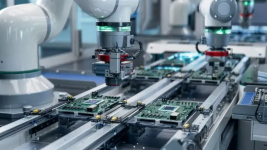It is not either legacy nodes or advanced nodes. We need all the semicon plants we can get.
But there is implicit ban on advanced nodes plant in India (<14nm), which we should be having one way or another to be truly self reliant.
See the reason given by TSMC to India, Qatar etc, when asked to setup advanced node:
See the semicon industry is very large with very niche players from Japan, Germany etc whom whole industry depends for these advanced nodes and TSMC is just a integrator of all these inputs(not discounting them for running a fab, they did good). Even the ASML of Dutch depends on very specific inputs from US and Germany, that is why when US banned ASML from exporting their EUV to China ASML stayed silent because they themselves depend on US tech.
Ideally, apart from this push to get fabs we should focus on one particular area of semicon either the design softwares or photoresists or lenses etc. So that we too can integrate in the supply chains globally and become indispensable like how Japan, Germany etc are.



